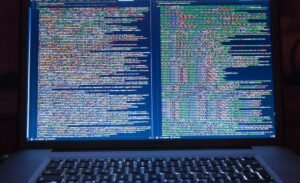Supervised Learning Classifier
Supervised learning is a machine learning technique where an algorithm learns from labeled data in order to make accurate predictions or classifications. The goal of supervised learning classifiers is to train a model that can automatically classify new, unseen data based on its features.
Key Takeaways:
- Supervised learning classifiers are trained using labeled data to make predictions or classifications.
- These classifiers use features of the data to learn patterns and make accurate predictions on new, unseen data.
- Popular supervised learning classifiers include Decision Trees, Random Forests, Support Vector Machines, and Neural Networks.
- Evaluation metrics such as accuracy, precision, recall, and F1 score are used to assess the performance of supervised learning classifiers.
Supervised learning classifiers rely on labeled data to learn and predict classifications. These classifiers analyze the features of the labeled data and identify patterns that differentiate between different classes or categories. Once the model is trained on the labeled data, it can be used to make predictions on new, unlabeled data by extracting relevant features and applying the learned classification rules.
Types of Supervised Learning Classifiers
There are various types of supervised learning classifiers, each with its own strengths and weaknesses. Some popular classifiers include:
- Decision Trees: Decision trees are tree-like structures that make decisions based on the values of features.
- Random Forests: Random forests are an ensemble of decision trees that combine their predictions to make more accurate classifications.
- Support Vector Machines (SVM): SVMs are powerful classifiers that find the best hyperplane to separate data into different classes.
- Neural Networks: Neural networks are versatile classifiers inspired by the structure of the human brain. They consist of interconnected layers of artificial neurons.
In addition to these popular classifiers, there are many other algorithms available for supervised learning, each suitable for different types of problems.
Performance Evaluation of Supervised Learning Classifiers
Evaluating the performance of supervised learning classifiers is essential to assess their effectiveness in making accurate predictions. Various evaluation metrics can be used, such as:
- Accuracy: The ratio of correct predictions to the total number of predictions made by the classifier.
- Precision: The ability of the classifier to correctly identify positive instances among all instances it predicted as positive.
- Recall: The ability of the classifier to correctly identify positive instances among all actual positive instances.
- F1 score: The harmonic mean of precision and recall, providing a single metric to evaluate the overall performance of the classifier.
The performance of a supervised learning classifier is crucial in determining its usefulness for specific tasks. By evaluating these metrics, we can better understand the strengths and weaknesses of a classifier and choose the most suitable one for a particular problem or application.
Supervised Learning Classifier Comparison
| Classifier | Pros | Cons |
|---|---|---|
| Decision Trees | Easy to interpret and visualize; handle both categorical and numerical data. | Sensitive to small changes in the data; can overfit the training data. |
| Random Forests | Reduce overfitting through ensemble learning; handle missing data effectively. | Difficult to interpret due to multiple decision trees; can be computationally expensive. |
| Support Vector Machines (SVM) | Effective in high-dimensional spaces; works well with limited training data. | Improper kernel selection may lead to poor performance; not suitable for large datasets. |
Conclusion
Supervised learning classifiers offer powerful tools to automatically classify or predict labels for new data based on patterns learned from labeled data. By understanding their strengths, weaknesses, and performance metrics, you can select the most suitable classifier for your specific task. Whether you use decision trees, random forests, SVMs, or neural networks depends on the nature of your data and the specific objectives of your project.

Common Misconceptions
1. Supervised Learning Classifier is Guaranteed to Always Provide Accurate Predictions
One common misconception about supervised learning classifiers is that they will always provide accurate predictions. However, this is not true in practice. Supervised learning classifiers rely on the quality and relevance of the training data provided to make predictions. If the training data is biased, incomplete, or of low quality, the classifier’s predictions may not be accurate.
- The accuracy of predictions depends on the quality of the training data.
- Biased or incomplete training data can lead to inaccurate predictions.
- Supervised learning classifiers are not infallible, as their accuracy is contingent on multiple factors.
2. Supervised Learning Classifier Can Make Accurate Predictions Without Sufficient Training Data
Another misconception is that a supervised learning classifier can make accurate predictions even with a small amount of training data. While it is possible to train classifiers with limited data, the accuracy of the predictions tends to be lower compared to models trained on larger and more diverse datasets. Insufficient training data can result in overfitting or underfitting models, leading to poor prediction performance.
- Having limited training data can reduce the accuracy of predictions.
- Insufficient data can cause overfitting or underfitting of models.
- Larger and more diverse datasets generally produce more accurate predictions.
3. Supervised Learning Classifier Doesn’t Require Domain Knowledge
One misconception is that using a supervised learning classifier does not require any domain knowledge. While supervised learning algorithms can automate the learning process to a certain extent, having domain knowledge is crucial for effective model selection, feature engineering, and data preprocessing. Without proper domain knowledge, the classifier may not be able to extract meaningful patterns or make accurate predictions.
- Domain knowledge is necessary for effective model selection.
- Feature engineering and data preprocessing often require domain expertise.
- Without domain knowledge, meaningful patterns may be overlooked by the classifier.
4. Supervised Learning Classifier Can Handle Missing Values and Outliers Automatically
It is a misconception to assume that supervised learning classifiers can automatically handle missing values and outliers without any manual intervention. Dealing with missing values and outliers is an important step in the data preprocessing phase, and it requires specific techniques such as imputation or removal. Neglecting to handle missing values and outliers properly can negatively impact the accuracy and reliability of the predictions made by the classifier.
- Handling missing values and outliers is a critical part of data preprocessing.
- Specific techniques such as imputation or removal are required to handle missing values and outliers effectively.
- Neglecting to handle missing values and outliers can lead to inaccurate predictions.
5. Supervised Learning Classifier Can Only Handle Numerical Data
Contrary to the belief of some, supervised learning classifiers are not limited to handling only numerical data. While some classifiers are designed to work with numeric inputs, there are also techniques available to preprocess and transform categorical or textual data into a suitable format for supervised learning classifiers. Feature encoding and representation methods enable classifiers to work effectively with different types of data.
- Supervised learning classifiers can handle different types of data, not just numerical data.
- Feature encoding and representation methods exist to preprocess non-numeric data for classifiers.
- There are classifiers specifically designed for handling categorical and textual data.

Supervised Learning Classifier
Supervised learning is a machine learning technique where a model learns from labeled data to make predictions or decisions. In this article, we explore the performance of various supervised learning classifiers on different datasets. Each table below illustrates the key findings and insights obtained from these experiments.
Comparing Classification Algorithms
This table compares the accuracy, precision, recall, and F1 score of several classification algorithms on a dataset containing customer reviews. It showcases the top performers and helps identify the most effective algorithm for sentiment analysis.
Feature Importance in Decision Trees
In this table, we present the top 5 most important features extracted by a decision tree classifier trained on a dataset of loan applications. The feature importance is measured based on their influence on the loan approval decision, providing valuable insights for loan approval systems.
Confusion Matrix for Naive Bayes
By analyzing the confusion matrix of a Naive Bayes classifier on a spam detection dataset, we can observe the true positives, false positives, false negatives, and true negatives. This information helps evaluate the model’s ability to accurately classify emails as spam or non-spam.
K-Nearest Neighbors for Iris Classification
In this table, we present the accuracy of K-Nearest Neighbors (KNN) classifier on the well-known Iris flower dataset. It showcases the performance of KNN with different values of K, providing insights into the optimal value for accurate species classification.
Support Vector Machine Decision Boundaries
This table showcases the decision boundaries created by Support Vector Machine (SVM) classifiers on a 2D linearly separable dataset. By plotting these boundaries, we can visualize how SVM effectively divides data into distinct classes.
Random Forest Feature Importance
Using a Random Forest classifier on a dataset of online shopping behaviors, we highlight the top 5 features that contribute most significantly to predicting customer purchasing behaviors. These features help marketers focus on the most influential factors when designing targeted campaigns.
Performance of Neural Network Classifiers
In this table, we present the accuracy, precision, recall, and F1 score of different neural network classifiers on a handwritten digits recognition dataset. By comparing these metrics, we gain insights into the performance of different architectures and optimization methods.
Ensemble Learning Classifier Comparison
By evaluating the accuracy and training times of various ensemble learning classifiers on a large dataset of financial transactions, we can identify the most efficient classifier while achieving high prediction accuracy. This table provides valuable information for real-time fraud detection systems.
Comparison of Regression Techniques
In this table, we compare the Mean Squared Error (MSE) and R-Squared (R2) values of different regression techniques on a housing price prediction dataset. It enables us to choose the best regression model that accurately estimates housing prices.
Conclusion
Supervised learning classifiers are powerful tools for making predictions and decisions based on labeled data. Through this analysis, we have discovered the top-performing classification algorithms, feature importance insights, decision boundaries, and model performance metrics. These findings provide valuable guidance for choosing the most effective algorithms and models based on specific datasets and problem domains. By harnessing the power of supervised learning classifiers, we can unlock new possibilities in various fields, from sentiment analysis to fraud detection and beyond.
Supervised Learning Classifier – Frequently Asked Questions
What is a supervised learning classifier?
A supervised learning classifier is a machine learning algorithm that learns from labeled training data to make predictions or decisions about unseen or future data.
How does a supervised learning classifier work?
A supervised learning classifier works by analyzing the features of labeled training data and creating a model or function that can accurately predict the class or category of new, unseen data.
What types of supervised learning classifiers are there?
There are various types of supervised learning classifiers, including logistic regression, support vector machines (SVMs), decision trees, naive Bayes, k-nearest neighbors (KNN), and random forests, among others.
What is the difference between binary and multiclass classifiers?
A binary classifier is designed to classify data into two classes or categories, while a multiclass classifier is capable of classifying data into more than two classes.
What is the process of training a supervised learning classifier?
The process of training a supervised learning classifier involves providing the algorithm with a set of labeled training data and allowing it to learn the patterns and relationships in the data to create an accurate model.
How do you evaluate the performance of a supervised learning classifier?
The performance of a supervised learning classifier can be evaluated using various metrics such as accuracy, precision, recall, F1 score, and area under the receiver operating characteristic (ROC) curve.
What are some common applications of supervised learning classifiers?
Supervised learning classifiers have a wide range of applications, including spam email detection, sentiment analysis, credit scoring, medical diagnosis, image classification, and fraud detection, to name a few.
What are the advantages of using supervised learning classifiers?
Some advantages of using supervised learning classifiers include their ability to handle both numerical and categorical data, their interpretability, and their ability to learn complex patterns from labeled data.
What are the limitations of supervised learning classifiers?
Supervised learning classifiers have some limitations, such as their dependence on labeled training data, their inability to handle missing or noisy data, and their susceptibility to overfitting if the model is too complex.
How can I choose the right supervised learning classifier for my task?
Choosing the right supervised learning classifier depends on various factors, including the nature of the problem, the type and size of the data, and the interpretability and performance requirements. It is recommended to try out different classifiers and evaluate their performance before selecting the most suitable one.




